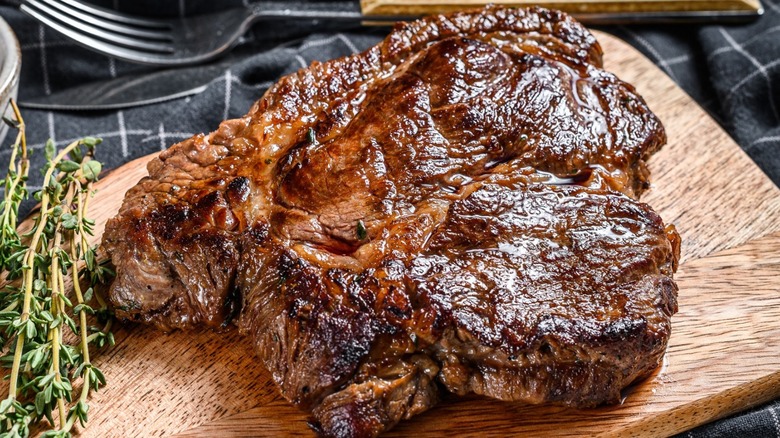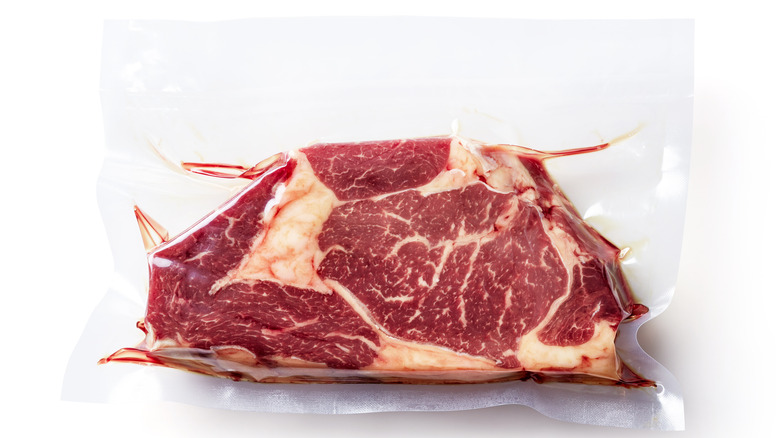How To Strategically Store Beef Chuck In The Freezer
Beef chuck, the affordable cut of beef used in cold weather comfort dishes like beef bourguignon, chili con carne, and pot roast, comes from the shoulder region of the cow. Chuck, the large primal cut, is known for its beefy flavor and marbled fat, making it ideal for slow recipes resulting in fall-apart tender meals (per Beef It's What's For Dinner).
The large square portion of the cow is broken down into popular sub-primal cuts like chuck roast, which is used for pot roast, short ribs, and stew beef, and leaner cuts ideal for grilling, like ground beef and flat iron steak. Chuck is the preferred cut in all cuisines when you want flavorful shredded beef. Recipes that require beef to be braised all day long in aromatic liquids like the tomato sauce in an Italian ragù or a chipotle pepper adobo and cumin-scented broth like in Mexican beef barbacoa.
According to the USDA, beef chuck is currently $6.78 per pound. Due to a severe drought affecting the production of cattle feed, hay, NPR reports that ranchers are slaughtering their cattle early since they won't survive the winter. 60% of cattle ranches in the U.S. are impacted, causing a temporary surge in beef in the market, which has brought prices down.
Savvy carnivores may want to take advantage of these short-term lower prices and stock up on beef chuck. If you have room in the freezer, here's how to strategically store beef long-term.
Air is the enemy
While all cuts of beef can be frozen, preserving their flavor, nutrients, and texture, some cuts do better than others. According to The Spruce Eats, tougher cuts like beef chuck can benefit from being frozen before use — defrosting helps break down the tough muscle fibers. The USDA recommends freezing raw beef for up to 12 months if packaged properly. Although food will be safe to eat after 12 months, the quality of the meat will deteriorate.
If purchasing beef in bulk, portion the meat before freezing it. Create packages according to the number of servings you make or the amount needed for a recipe. This will make defrosting and food prep easier.
To properly preserve the flavor and texture of the beef, it should be double-wrapped. First, wrap the chuck in a layer of plastic wrap or foil, removing all the air around the meat to prevent freezer burn. Then place the chuck in a freezer-safe baggie, use a vacuum sealer, or wrap it again in parchment or freezer paper. The vacuum sealer will give the most consistent results eliminating freezer burn from defrosted steaks, per MasterClass.
Before placing the meat in the freezer, label the package, including the date. You'd be surprised how quickly we forget. Store the food flat, so it freezes evenly. To defrost the chuck, place the freezer bag in the refrigerator overnight or in a bowl of water. Food left on the counter runs the risk of spoiling.

